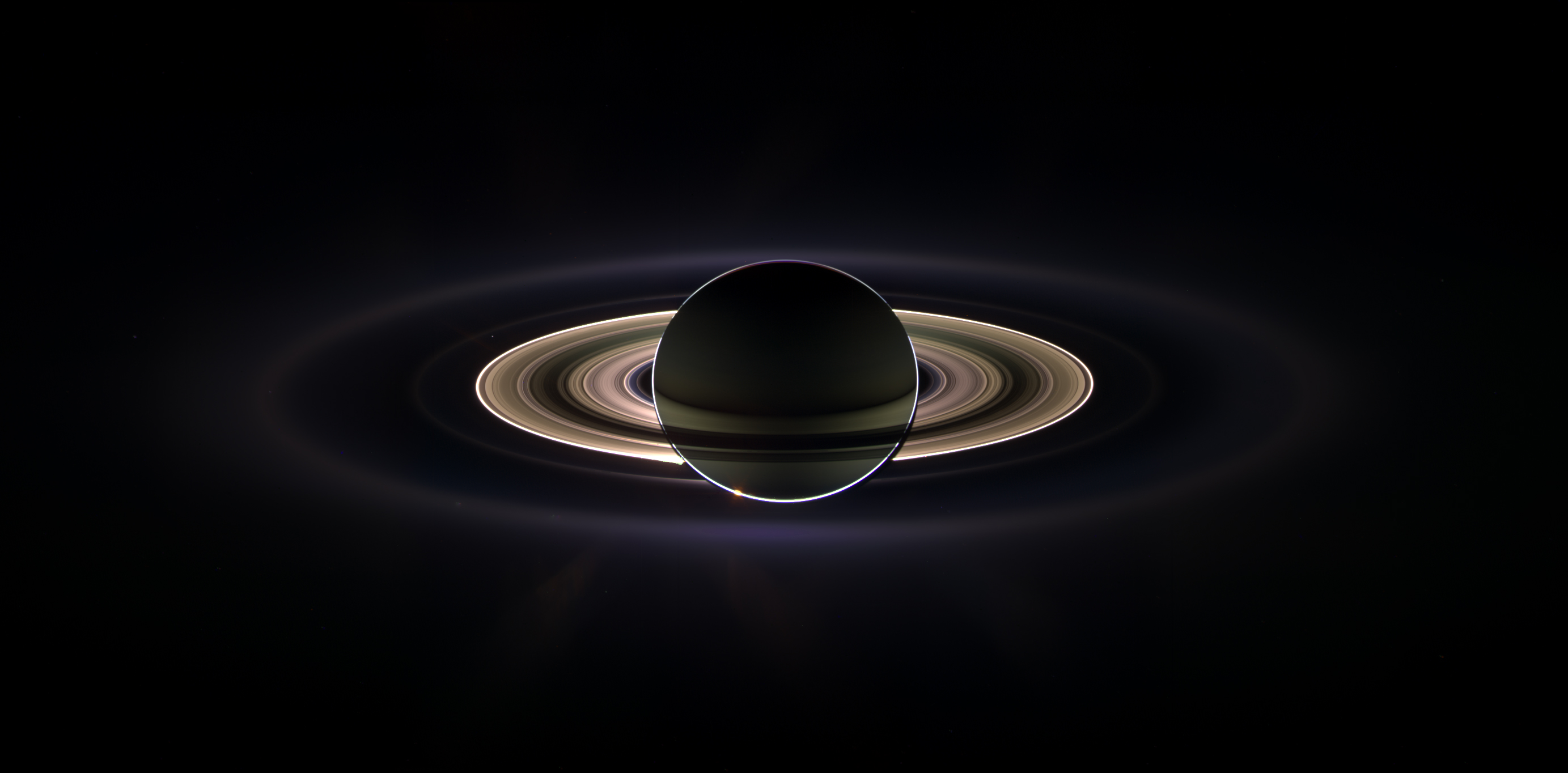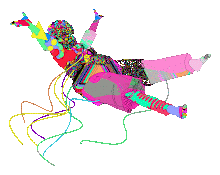20070731
Purine Nucleoside Phosphorylase
eclipsed to death by
...and you will know us by the trail of dead
@
31.7.07
0
eclipses
![]()
the engraved hourglass nebula
It should be noted there is another nebula which shares the designation of hourglass nebula it can be found in the Lagoon Nebula.
Observation data
Declination: -67° 22′ 51.45″
Distance: 8 kly (2.5 kpc)
Apparent magnitude: 13.0
Constellation: Musca
eclipsed to death by
...and you will know us by the trail of dead
@
31.7.07
0
eclipses
![]()
tags: nebula
20070730
earth lights
eclipsed to death by
...and you will know us by the trail of dead
@
30.7.07
0
eclipses
![]()
tags: earth
20070727
sr-71 blackbird
Crew: 2
Payload: 3,500 lb (1,600 kg) of sensors
Length: 107 ft 5 in (32.74 m)
Wingspan: 55 ft 7 in (16.94 m)
Height: 18 ft 6 in (5.64 m)
Wing area: 1,800 ft2 (170 m2)
Empty weight: 67,500 lb (30 600 kg)
Loaded weight: 170,000 lb (77 000 kg)
Max takeoff weight: 172,000 lb (78 000 kg)
Powerplant: 2× Pratt & Whitney J58-1 continuous-bleed afterburning turbojets, 32,500 lbf (145 kN) each
Wheel track: 16 ft 8 in (5.08 m)
Wheel base: 37 ft 10 in (11.53 m)
Aspect ratio: 1.7
Performance
Maximum speed: Mach 3.3+ (2,200+ mph, 3530+ km/h) at 80,000 ft (24,000m)
Range:
Combat: 2,900 nm (5400 km)
Ferry: 3,200 nm (5,925 km)
Service ceiling: 85,000 ft (25,900m, 16 miles)
Rate of climb: 11,810 ft/min (60 m/s)
Wing loading: 94 lb/ft2 (460 kg/m2)
Thrust/weight: 0.382
eclipsed to death by
...and you will know us by the trail of dead
@
27.7.07
0
eclipses
![]()
20070725
photo session: saturn
eclipsed to death by
...and you will know us by the trail of dead
@
25.7.07
0
eclipses
![]()
tags: photo session, saturn, spacecraft
Hyperion
High-resolution images taken by NASA's Cassini spacecraft—including the picture above taken in 2005—suggest the satellite's cuplike craters are reservoirs for hydrocarbons. The finding could mean that the ingredients needed for life as we know it may be more common in our solar system than previously thought, according to NASA.
Dark material spotted at the bottoms of some of the moon's craters has the same chemical signature as hydrocarbons, NASA scientists said. These organic molecules—made of hydrogen and carbon—are also found in comets, meteorites, and galactic dust.
eclipsed to death by
...and you will know us by the trail of dead
@
25.7.07
0
eclipses
![]()
tags: moon, saturn, spacecraft
orion rising
 Orion always comes up sideways ... and was caught in the act earlier this month by astronomer Jimmy Westlake, stargazing eastward over the Rocky Mountains north of Leadville, Colorado, USA. To make this gorgeous image, Westlake placed his camera on a tripod for two exposures. The first lasted for 18 minutes allowing the stars to trail as they rose above the mountain range. After a minute long pause, the second exposure began and lasted only 25 seconds decorating the end of each trail with a celestial point of light. The three bright stars in Orion's belt stand in a nearly vertical line above the mountain peak right of center. Hanging from his belt, the stars and nebulae of the Hunter's sword follow the slope down and to the right. A festive yellow-orange Betelgeuse is the brightest star above the peak just left of center, but brighter still, planet Saturn shines near the upper left corner. In the foreground on planet Earth, a frozen lake and snowy mountains are lit by a four day old crescent Moon.
Orion always comes up sideways ... and was caught in the act earlier this month by astronomer Jimmy Westlake, stargazing eastward over the Rocky Mountains north of Leadville, Colorado, USA. To make this gorgeous image, Westlake placed his camera on a tripod for two exposures. The first lasted for 18 minutes allowing the stars to trail as they rose above the mountain range. After a minute long pause, the second exposure began and lasted only 25 seconds decorating the end of each trail with a celestial point of light. The three bright stars in Orion's belt stand in a nearly vertical line above the mountain peak right of center. Hanging from his belt, the stars and nebulae of the Hunter's sword follow the slope down and to the right. A festive yellow-orange Betelgeuse is the brightest star above the peak just left of center, but brighter still, planet Saturn shines near the upper left corner. In the foreground on planet Earth, a frozen lake and snowy mountains are lit by a four day old crescent Moon.
eclipsed to death by
...and you will know us by the trail of dead
@
25.7.07
0
eclipses
![]()
20070724
giant planet candidate companion
eclipsed to death by
...and you will know us by the trail of dead
@
24.7.07
0
eclipses
![]()
tags: exoplanet
neptune and triton
eclipsed to death by
...and you will know us by the trail of dead
@
24.7.07
0
eclipses
![]()
tags: neptune, spacecraft
Dr. von Braun Standing by Five F-1 Engines

A pioneer of America's space program, Dr. von Braun stands by the five F-1 engines of the Saturn V launch vehicle. This Saturn V vehicle is an actual test vehicle which has been displayed at the U.S. Space Rocket Center in Huntsville, Alabama. Designed and developed by Rocketdyne under the direction of the Marshall Space Flight Center, a cluster of five F-1 engines was mounted on the Saturn V S-IC (first) stage. The engines measured 19-feet tall by 12.5-feet at the nozzle exit and burned 15 tons of liquid oxygen and kerosene each second to produce 7,500,000 pounds of thrust. The S-IC stage is the first stage, or booster, of a 364-foot long rocket that ultimately took astronauts to the Moon.
Source: http://nix.larc.nasa.gov/info;jsessionid=5d5m4ql7dku94?id=MSFC-0201422&orgid=11
eclipsed to death by
...and you will know us by the trail of dead
@
24.7.07
0
eclipses
![]()
tags: aircraft, nasa, spacecraft
eclipsed saturn
 Saturn eclipsing the sun, seen from behind from the Cassini orbiter. The image is a composite assembled from images taken by the Cassini spacecraft on 15 September, 2006.
Saturn eclipsing the sun, seen from behind from the Cassini orbiter. The image is a composite assembled from images taken by the Cassini spacecraft on 15 September, 2006.
Individual rings seen include (in order, starting from most distant):
- E ring
- Pallene ring (visible very faintly in an arc just below Saturn)
- G ring
- Janus/Epimetheus ring (faint)
- F ring (narrow brightest feature)
- Main rings (A,B,C)
- D ring (bluish, nearest Saturn)
For a detailed description, see http://photojournal.jpl.nasa.gov/catalog/PIA08329 and http://saturn.jpl.nasa.gov/news/press-release-details.cfm?newsID=698
eclipsed to death by
...and you will know us by the trail of dead
@
24.7.07
0
eclipses
![]()
tags: eclipse, saturn, spacecraft
20070723
military laser experiment
eclipsed to death by
...and you will know us by the trail of dead
@
23.7.07
0
eclipses
![]()
Prandtl-Glauert singularity

One view of this phenomenon is that it exhibits the effect of compressibility and the so-called "N-wave". The N-wave is the time variant pressure profile seen by a static observer as a sonic compression wave passes. The overall three-dimensional shock wave is in the form of a cone with its apex at the supersonic aircraft. This wave follows the aircraft. The pressure profile of the wave is composed of a leading compression component (the initial upward stroke of the "N"), followed by a pressure descent forming a rarefaction of the air (the downward diagonal of the "N"), followed by a return to the normal ambient pressure (the final upward stroke of the "N"). The rarefaction may be thought of as the "rebounding" of the compression due to inertial effects. These condensation clouds, also known as "shock-collars" or "shock eggs," are frequently seen during space-shuttle launches around 25 to 33 seconds after launch when the vehicle passes through the area of maximum dynamic air-pressure, or max Q. These effects are also visible in archival footage of some nuclear tests. The condensation marks the approximate location of the shock wave.

eclipsed to death by
...and you will know us by the trail of dead
@
23.7.07
13
eclipses
![]()
tags: aircraft, singularity
20070720
largest known star
Object Name:
VY Canis Majoris
Object Description:
Variable Star with Circumstellar Nebula
Position (J2000):
R.A. 07h 22m 58s.33Dec. -25° 46' 3".2
Constellation:
Canis Major
Distance:
Approximately 5,000 light-years (1.5 kiloparsecs)
Dimensions:
These images are roughly 35 arcseconds (0.85 light-years or 0.25 parsecs) across.
eclipsed to death by
...and you will know us by the trail of dead
@
20.7.07
0
eclipses
![]()
journey to the center of the galaxy

In Jules Verne's science fiction classic A Journey to the Center of the Earth, Professor Hardwigg and his fellow explorers encounter many strange and exciting wonders. What wonders lie at the center of our Galaxy? Astronomers know of some of the bizarre objects which exist there, like vast cosmic dust clouds, bright star clusters, swirling rings of gas, and even a supermassive black hole. Much of the Galactic Center is shielded from our view in visible light by the intervening dust and gas, but it can be explored using other forms of electromagnetic radiation. This haunting wide angle image of the Galactic Center region in infrared light was constructed using data from the Midcourse Space Experiment (MSX) satellite. The image maps three mid-infrared bands, otherwise invisible to human eyes, into visible blue, green, and red colors revealing the thermal emission from dust clouds near the galactic center that have been heated by starlight. The galactic plane runs along the middle of this image while the galactic center itself is the bright spot at picture center. The field of view of this cropped picture is about 1.5 by 2.5 degrees.
Journey to the Center of the Galaxy Credit: MSX, IPAC, NASA
eclipsed to death by
...and you will know us by the trail of dead
@
20.7.07
0
eclipses
![]()
tags: black hole, galaxy
20070713
proteus
Picture: Proteus in flight in 2002 in the Department of Energy’s Atmospheric Radiation Measurement - Unmanned Aerial Vehicle (ARM-UAV)* Program.
Crew: Two (pilot & co-pilot)
Length: 56 ft 4 in (17.17 m)
Wingspan: 77 ft 7 in (23.65 m)
Height: 17 ft 7 in (5.36 m)
Wing area: 487.7 ft² (including canards) (45.31 m²)
Empty weight: 5,900 lb (2,700 kg)
Loaded weight: 12,500 lb (5,700 kg)
Powerplant: 2× Williams International FJ44-2 , 2,300 lbf (10.2 kN) each
Range: 415 nm (480 miles, 770 km)
Service ceiling: 60,000 ft (18,300 m)
Rate of climb: 6,000 ft/min (30 m/s)
Wing loading: 26 lb/ft² (128 kg/m²)
Thrust/weight: 1.8 N/kg
eclipsed to death by
...and you will know us by the trail of dead
@
13.7.07
0
eclipses
![]()
YB49

Length: 53 ft 1 in (16.20 m)
Wingspan: 172 ft 0 in (52.40 m)
Height: 20 ft 3 in (6.2 m)
Wing area: 4,000 ft² (371.6 m²)
Airfoil: NACA 65-019 root, NACA 65-018 tip
Empty weight: 88,442 lb (40,116 kg)
Loaded weight: 133,559 lb (60,581 kg)
Max takeoff weight: 193,938 lb (87,969 kg)
Powerplant: 8× Allison/General Electric J35-A-19 turbojets, 3,800 lbf (17 kN) each
Range:
Combat: 1,615 mi (2,599 km)
Ferry: 3,578 mi (5,758 km)
Service ceiling: 45,700 ft (13,900 m)
Rate of climb: 3,758 ft/min (19.1 m/s)
Wing loading: 33 lb/ft² (163 kg/m²)
Thrust/weight: 0.23
Bombs: 32,000 lb (14,500 kg)
eclipsed to death by
...and you will know us by the trail of dead
@
13.7.07
0
eclipses
![]()
20070710
1919 negative eclipse
From the report of Sir Arthur Eddington on the expedition to verify Albert Einstein's prediction of the bending of light around the sun.
In Plate 1 is given a half-tone reproduction of one of the negatives taken with the 4-inch lens at Sobral. This shows the position of the stars, and, as far as possible in a reproduction of this kind, the character of the images, as there has been no retouching. A number of photographic prints have been made and applications for these from astronomers, who wish to assure themselves of the quality of the photographs, will be considered as as far as possible acceded to.
Source: F. W. Dyson, A. S. Eddington, and C. Davidson, "A Determination of the Deflection of Light by the Sun's Gravitational Field, from Observations Made at the Total Eclipse of May 29, 1919"
ps: the positive/normal version can be seen here.
20070707
Descent Panorama of Saturn's Titan
eclipsed to death by
...and you will know us by the trail of dead
@
7.7.07
0
eclipses
![]()
great mountain moonrise
eclipsed to death by
...and you will know us by the trail of dead
@
7.7.07
0
eclipses
![]()




















